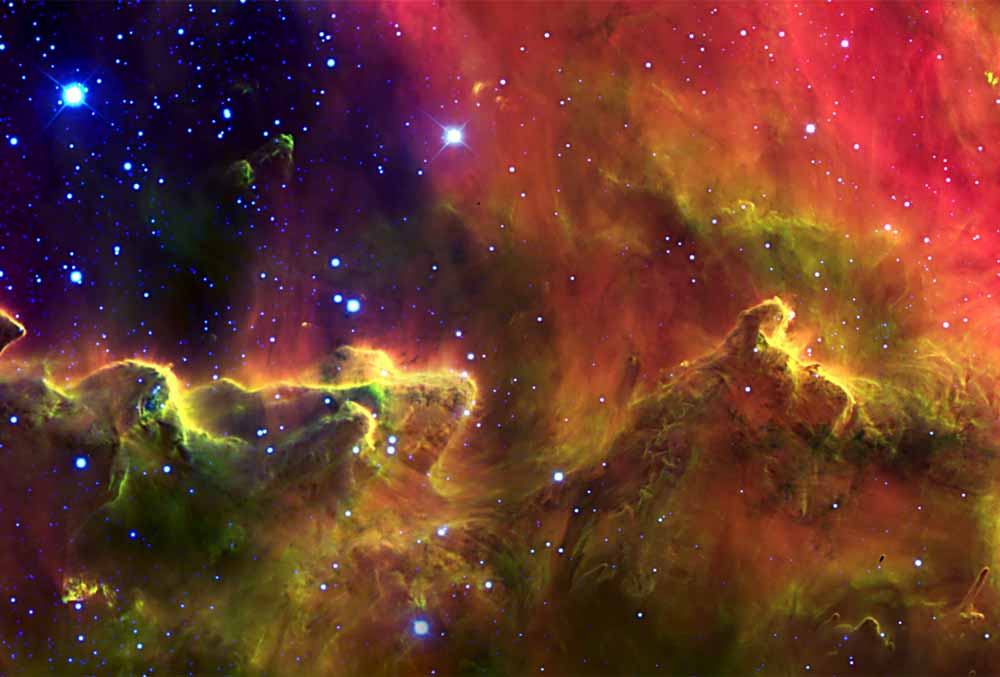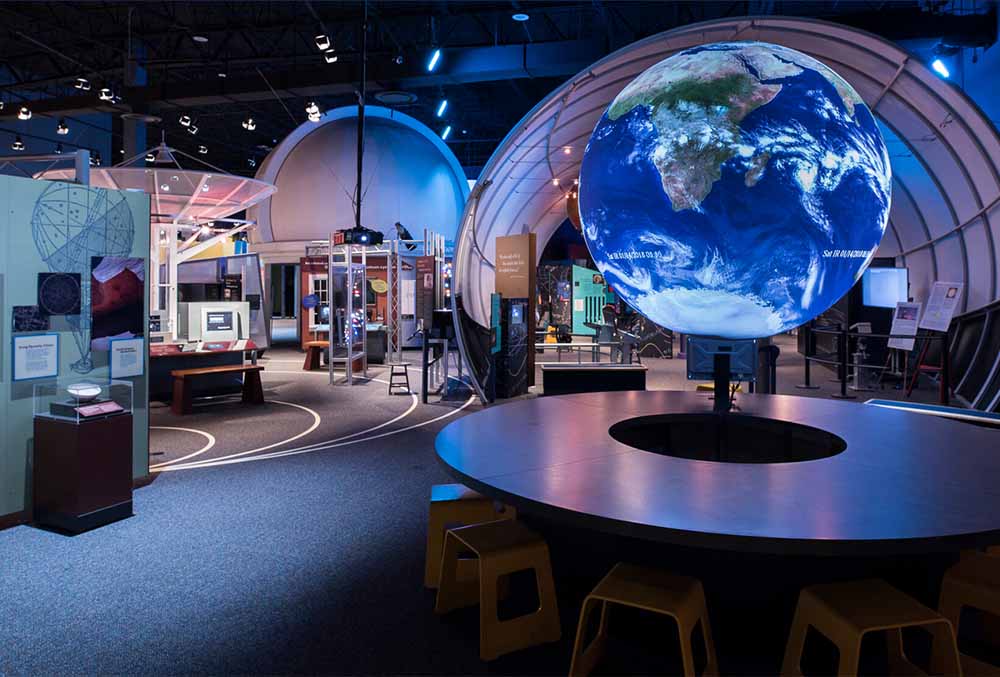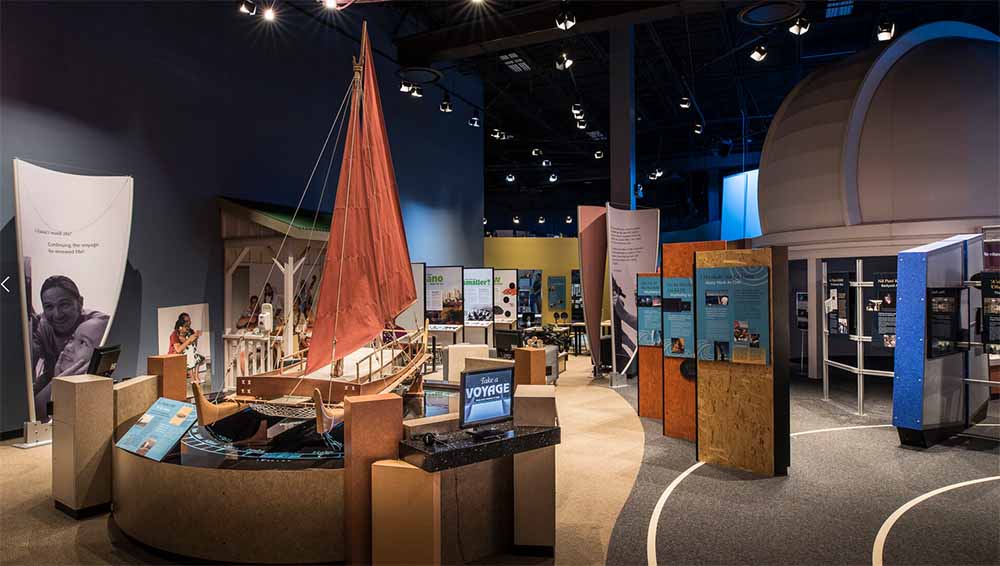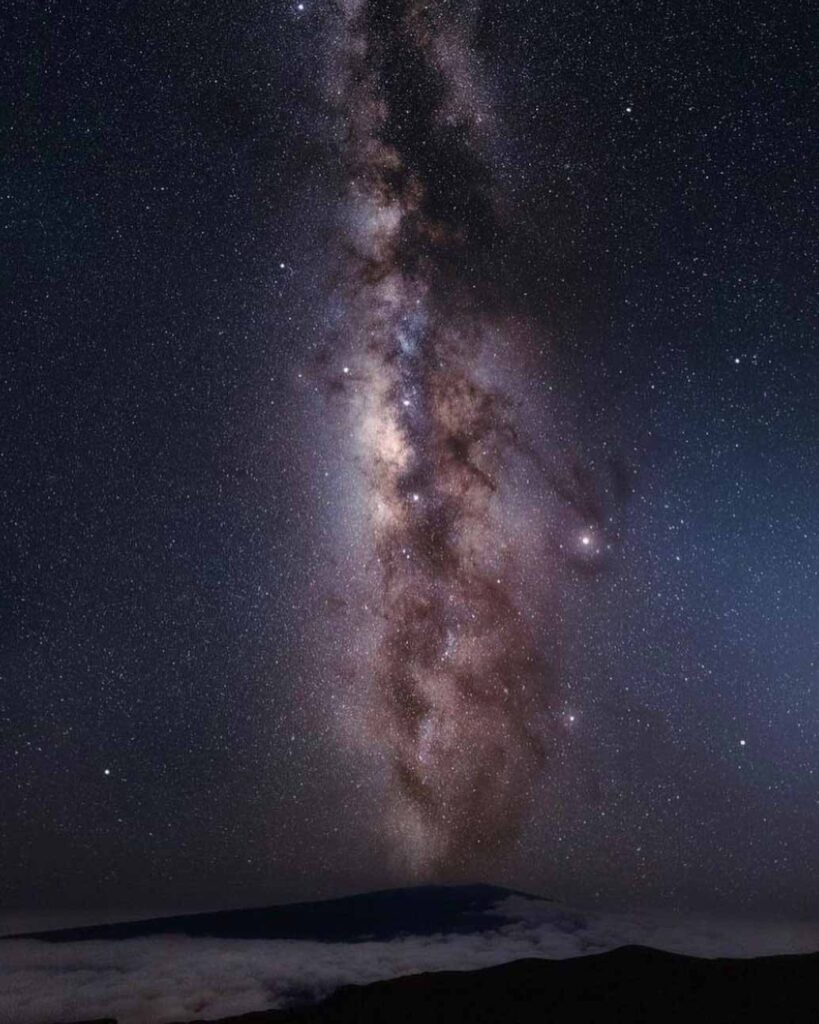Mar 3, 2023
Starry, Starry Nights

A whirling white orb in space. New stars being born in the Eagles Nebula. A red giant supernova. The closest black hole to earth.
These astronomical wonders are recent images captured by an international community of observatories on the summit of Mauna Kea. From there, twelve giant instruments are operated by twelve different nonprofits from eleven countries. At 33,000’ above sea level, higher than 40% of the world’s atmosphere, scientists on site, and at land bases below, are able to see farther than any human has before.
And humans have been watching the stars for a long, long time.
Long before the first telescope came to the island, astronomy was critically important to Hawai‘i and her Polynesian canoe voyagers. Using celestial navigation, passed down orally through the generations, they traveled thousands of nautical miles across the South Pacific.
When the traditional sailing canoe Hōkūle‘a was built in the 1970s, she and her crew helped revive the ancient art that was almost lost to time. They were able to connect with Papa Mau Piailug, one of only a handful of navigators trained in the old ways. He agreed to share his knowledge with the team, and with the future.
As a result, Hōkūle‘a, and the small fleet of other canoes that came after, continue to sail today, navigating by the same stars being studied by huge telescopes on the summit of Mauna Kea.
It was a tsunami that inspired the first telescope on Mauna Kea. Hilo was devastated by a massive tidal wave in 1960. Mitsuo Akiyama, an officer of the Hawai‘i Island Chamber of Commerce began looking for ways to rebuild the island’s economy. He thought Mauna Kea would be a good site for an observatory, and reached out to universities in the U.S. and Japan. A proposal competition began.
The State of Hawai‘i put up funds to build a road up the mountain, and NASA sponsored a 12” telescope to test the site. In the end, the University of Hawaii’s proposal was accepted, and its 2.2 (88”) telescope was first. Over the next twenty years, twelve more observatories were constructed on the mountain.
Hawaii astronomy supports 1,313 jobs and generates $221 million in economic impact, according to a study by the University of Hawaii Economic Research Organization released last year.
But to those who revere Mauna Kea as a sacred space, there are more important things than money. The summit, the highest point in the Pacific, is a wahi pana (sacred place) in Hawaiian culture, home of ancient ancestors, connecting heaven and earth. Controversy has paused new construction, and conversations continue as ways to allow science and the sacred to coexist on the mountain.

The ‘Imiloa Astronomy Center in Hilo does a beautiful job of expressing both modern astronomy and ancient practice. Here, the story is told from then and now, using Hawaiian chant and storytelling, side by side with a full dome planetarium that captures the compelling awe and stories of the stars and other heavenly bodies.
“ʻImiloa brings together members of the Hawaiian and astronomy communities to share a common vision for the future, bringing information about the cultural and natural history of Mauna Kea to students, teachers, our local residents, and visitors from around the world,” says their website. “‘Imiloa links to early Polynesian navigation history and knowledge of the night skies, and today’s renaissance of Hawaiian culture and wayfinding with parallel growth of astronomy and scientific developments on Hawai‘i Island.”

Among many other fascinating programs is A Hua He Inoa, a collaboration led by ‘Imiloa which brings together Hawaiian-speaking students, educators and scientists to name astronomical discoveries. A recent example is the black hole, Pōwehi” Embellished Dark Source of Unending Creation.”
It’s also a lot of fun. From the moment you drive up to the cone-shaped silver structures, you know you’re in for something special. The exhibits are excellent, complete with soundtrack and subdued lighting, and the planetarium will take your breath away. There’s a restaurant, gift shop, and a nature garden outside.
For those who want to see the celestial sights for themselves, there are no public tours of the telescopes themselves, but there are numerous stargazing and summit tours. One of the best is Hawai‘i Forest and Trail. Founder and CEO Rob Pacheco and his team have been sharing the island since 1990, and their expertise shows. HFT also has a “Give-Back Tour” that combines a trip up the mountain with some volunteer time with the Waikoloa Dry Forest Initiative, preserving an endangered habitat. Additionally, $20 of each ticket price is directly donated.
This is a nine-hour adventure that goes from hot, sunny Waikoloa to freezing, possibly wet weather at the summit, so it’s not for everyone. Those who are able to make the trek enjoy a warm picnic dinner and talk-story at the Ellison Onizuka Visitor Center, then go to the summit for a spectacular sunset from the highest point in Hawai‘i. Afterwards, the group returns to the center for stargazing through an 11” Celestron telescope—while sipping hot chocolate of course.
If you want to do it on your own, the Visitor Center is open daily from 9 a.m.-9 p.m. It is accessible by a regular vehicle (not 4WD), with restrooms, a gift shop, education programs and more. Weather conditions make operations subject to change, so check the website before you go up.
Back on the ground, the Mauna Kea observatories host a busy schedule of community outreach programs, in-school learning opportunities, public lectures, astronomy fairs and festivals, and more.
The Maunakea Observatories include:
- Caltech Submillimeter Observatory,
- Canada-France-Hawaii Telescope,
- Gemini International Observatory,
- James Clerk Maxwell Telescope (EAO),
- NASA Infrared Telescope Facility,
- Subaru Telescope,
- Submillimeter Array,
- UKIRT Observatory,
- University of Hawai’i Hilo Educational Telescope,
- University of Hawai‘i 2.2 Meter Telescope,
- Very Long Baseline Array,
- W. M. Keck Observatory (Keck I and Keck II).
And if that doesn’t satisfy your newfound passion for astronomy, the Bishop Museum has incredible online resources. These include an astronomy events calendar, Hawaiian sky maps, moon phases, and much more.
Enjoy your trek through the stars of Hawaiian skies!





